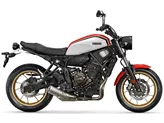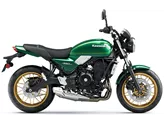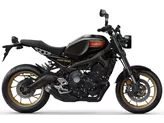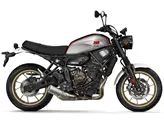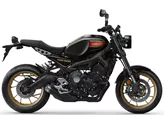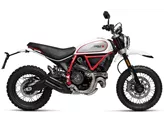Kawasaki ER-6n 2011 vs. Yamaha XSR700 2017

Kawasaki ER-6n 2011

Yamaha XSR700 2017
Overview - Kawasaki ER-6n 2011 vs Yamaha XSR700 2017
The Kawasaki ER-6n 2011 and the Yamaha XSR700 2017 are both naked bikes with similar technical specifications. Both bikes have an in-line engine with 2 cylinders and liquid cooling. However, there are some notable differences between the two models.
In terms of engine power, the Yamaha XSR700 2017 has a slightly higher horsepower of 75 HP compared to the Kawasaki ER-6n 2011's 72 HP. The torque is also slightly higher in the Yamaha XSR700 2017 with 68 Nm compared to the Kawasaki ER-6n 2011's 66 Nm. Both bikes have a monoshock rear suspension and a steel frame chassis.
When it comes to braking, the Yamaha XSR700 2017 has four-piston front brake pistons, while the Kawasaki ER-6n 2011 has double-piston front brake pistons. This could potentially result in better braking performance in the Yamaha XSR700 2017.

Kawasaki ER-6n 2011
In terms of dimensions and weights, the Yamaha XSR700 2017 has a slightly wider rear tire width of 180 mm compared to the Kawasaki ER-6n 2011's 160 mm. The wheelbase is also slightly longer in the Kawasaki ER-6n 2011 with 1410 mm compared to the Yamaha XSR700 2017's 1405 mm. The seat height is higher in the Yamaha XSR700 2017 with 815 mm compared to the Kawasaki ER-6n 2011's 790 mm. However, the Yamaha XSR700 2017 is lighter with a kerb weight of 186 kg compared to the Kawasaki ER-6n 2011's 208 kg.
In terms of fuel tank capacity, the Kawasaki ER-6n 2011 has a larger capacity of 15.5 liters compared to the Yamaha XSR700 2017's 14 liters.

Yamaha XSR700 2017
In terms of strengths, the Kawasaki ER-6n 2011 has ABS, wider handlebars, a slimmer waist, increased intake noise, a comfortable seat, and an uncomplicated chassis. On the other hand, the Yamaha XSR700 2017 has a wonderful engine, solid workmanship, a cool retro look, a large range of original accessories, a great automatic gearshift, a sporty and tight chassis, and is easy to drive. It is also described as a "joy dispenser" for riders of all ages.
In terms of weaknesses, the Kawasaki ER-6n 2011 does not have any listed weaknesses. However, the Yamaha XSR700 2017 has some weaknesses including the readability of the display, the license plate holder being a matter of taste, a lack of consistency in some design details, and concept-related poor wind protection when driving at high speeds.
In conclusion, both the Kawasaki ER-6n 2011 and the Yamaha XSR700 2017 have their own strengths and weaknesses. The Kawasaki ER-6n 2011 offers ABS and a comfortable riding experience, while the Yamaha XSR700 2017 has a powerful engine and a cool retro look. Ultimately, the choice between the two models will depend on the rider's preferences and priorities.
Technical Specifications Kawasaki ER-6n 2011 compared to Yamaha XSR700 2017
Pros and Cons in comparison
Pros and Cons in comparison
Kawasaki ER-6n 2011
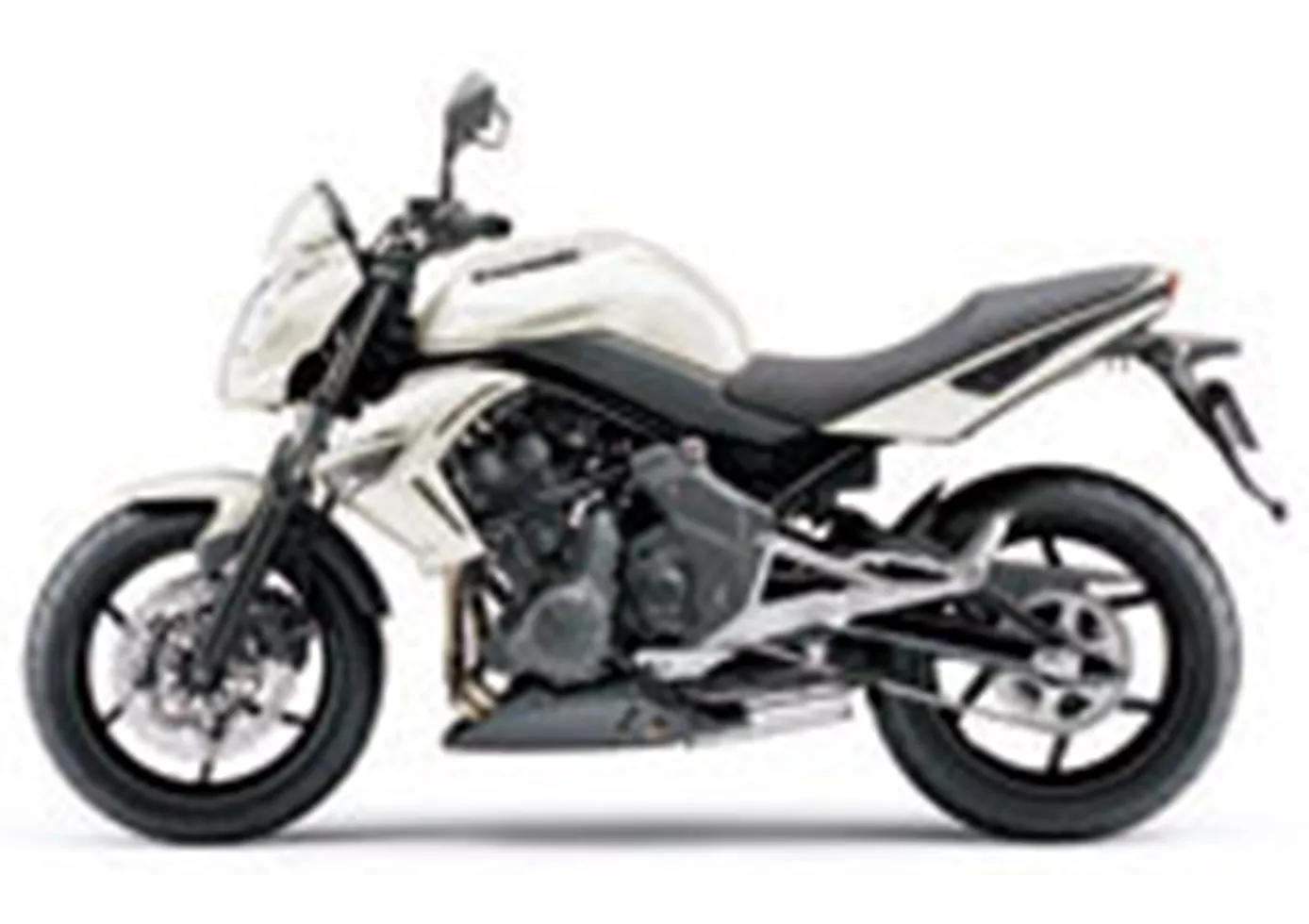
You won't find such a coherent package with such fine details anywhere else at this price. The ER-6n has become a little sharper again, both visually and dynamically, and is more fun than ever.
Yamaha XSR700 2017

The XSR is the perfect everyday bike for me. It is visually a feast for the eyes, has an incredible amount of power, but is still light and agile. The seating position allows longer rides, as the luggage can be carried on the back without any problems. The XSR itself doesn't know exactly what it wants to be now. But I find the resulting mix quite exciting. So if you don't want to (or can't) have different bikes in the garage, the XSR is a very good choice. served very well. It has everything you expect from a motorbike. In a hotel, one would speak of an all-inclusive offer. It is perfect for It is perfect for the daily ride to the office, for weekend excursions and smaller tours to the south. Even with a pillion, the bike is very easy to move. As usual from Yamaha, the bike makes a very solid impression. Everything simply works here. The exhaust is pleasantly quiet, but from 5000 rpm it produces a very appealing and throaty sound. The rear end is a matter of taste. Personally, I would rebuild the rear and remove the plastic elements. I also find the standard mirrors a little large. The retro look was not quite carried through here. However, this can be changed very quickly and easily thanks to the many accessories. The instrument panel is basically easy to read. However, a lot of information is space. Here, design and functionality clash a little. Summarised in one sentence: The perfect bike for every challenge.
Price Comparison Avarage Market Price Kawasaki ER-6n vs Yamaha XSR700
There are a few key differences between a Kawasaki ER-6n 2011 and a Yamaha XSR700 2017. In terms of price, the actual average price of a Yamaha XSR700 2017 is about 70% higher. A Kawasaki ER-6n 2011 experiences a loss of 230 USD in one year and 500 USD in two years of ownership. This is offset by a loss of 110 USD and 780 USD for a Yamaha XSR700 2017. Compared to Yamaha XSR700 2017 there are less Kawasaki ER-6n 2011 bikes available on the 1000PS.de Marketplace, specifically 5 compared to 7. It takes less time to sell a Kawasaki ER-6n with 49 days compared to 91 days for a Yamaha XSR700. Since model year 2006 1000PS.de editors have written 16 reviews for the Kawasaki ER-6n and 26 reviews for the Yamaha XSR700 since model year 2015. The first review for the Kawasaki ER-6n was published on 6/29/2005 and now has more than 11,200 views. This compares to more than 13,700 views for the first review on Yamaha XSR700 published on 7/22/2015.


